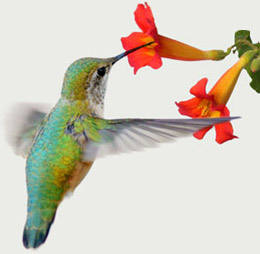
How to attract hummingbirds and song birds
Posted in Healthy Home & Garden on May 2, 2014. Last modified on April 30, 2019. Read disclaimer.
- Food
Many birds that eat insects during most of the year rely on seeds or berries during the winter. Berry producing trees and shrubs are "winter survival" foods for some birds, such as the Eastern bluebird, which do not eat seeds. Seed heads left in flower beds will often attract small birds, as well. Of course, bird feeders attract many birds with black oil sunflower seeds being preferred by most species.
Consider keeping feeders up year around to keep songbirds in the yard. Many will eat insects in addition to the seeds, especially when they are feeding young. - Water
Birds need water year-round. Running or dripping water is especially good for attracting them into the landscape. Birds will use shallow water for both drinking and bathing. Small birds often will not use bird baths that are more than 2 inches deep. - Shelter
Birds need protection from the elements. Thick evergreen shrubs can be lifesavers for birds, especially during the winter. These shrubs are also used for nesting by many species. Tree cavities are used by a number of birds for nesting. Of course, man-made nest boxes are used by several songbird species for nesting as well as winter roosting.
+ Free Shipping & Returns on Eligible Items.
(*Amazon's Top 100 list updated hourly.)
...and what helps to attract hummingbirds?
- Feeders
The most popular way to attract hummingbirds is to provide nectar in a feeder... and hummingbirds are attracted to the color red. For this reason, most commercially made hummingbird feeders have red on the feeding tubes, so your nectar does not need to be colored (in fact, the addition of red food coloring to the solution may be harmful to hummingbirds). If needed, stick red tape to feeder openings.
Use a special feed mix, or mix 1 part white granulated sugar with 4 parts boiling water. Dissolve sugar completely and allow to cool. Refrigerate unused portions. Clean feeders weekly with water/vinegar solution.
Avoid using honey solution in feeders, which tends to spoil quickly -- which can be harmful to hummingbirds.
To keep ants and stinging insects from the sugar-water solution, spread petroleum jelly on feeder openings and the feeder's chord or wire.
Position feeders in a sunny area where they will be sheltered from wind and, if possible, near flowers where hummingbirds already tend to feed. - Flowers that will attract hummers are also beneficial. The flower nectar will provide vitamins and minerals not contained in the sugar-water. The birds will also eat small insects found in the flowers. Avoid using pesticides or herbicides in areas frequented by hummingbirds.
Landscaping for the birds
Autumn olive (Elaeagnus spp.)
Blackberry (Rhubus spp.)
Blueberry (Vaccinium corymbosum)
Strawberries
Elderberry (Sambucus canadensis)
Washington Hawthorn (Crataegus)
Serviceberry (Amelanchier arborea)
Flowering Dogwood (Comus florida)
Holly (llex spp.)
Oaks (Querqus spp.)
Sumac (Rhus spp.)
Viburnums
Pyracantha
Cherry (Prunus spp.)
Nandina
Sunflowers
Plants That Provide Shelter
Cedar (Juniperus virginiana)
Leyland cypress (Cupressocyparis
leylandii)
Elaeagnus
Holly (llex spp.)
White pine (Pinus strobus)
Yew (Taxux spp.)
Privet (Ligustrum spp.)
Boxwood (Buxus spp.)
Wisteria
Garden Phlox
Trumpet creeper (Campsis
radicans)
Fushia (Fushia triphylla)
Azaleas & Rhododendron
Canna
Trumpet Creeper, Honeysuckle, Yellow Jasmine & Clematis vines
Bee Balm (Monarda didyma)
Scarlet sage (Salvia splendens)
Butterfly bush (Buddleia davidii)
Cardinal flower (Lobelia cardinalis)
Coral bells (Heuchera sanguinea)
Red-hat-poker (Kniphofia uvaria)
Penstemon
Scarlet runner bean
(Phaseolus coccineus)
Petunias
Almost any red or orange flowers
Preventing birds from hitting windows
A concern for many bird lovers is how to prevent birds from injuring themselves when they fly into the windows of your home. And by attracting birds by providing shelter, food and water, as described above, we're increasing the possibility of having window collisions happen.
The Cornell Lab of Ornithology offers tips for how to prevent birds from hitting windows... though many of them, such as window decals, may disrupt your vision from within the house.
We have quite-a-few big windows at our house and had 4 bird injuries last fall and 1 this spring (migratory season apparently increases the likelihood of collisions). 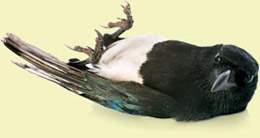 So, for around $25, we've now shielded a row of large windows without obstructing our view. And our solution is unnoticeable to passersby outside. See a photo, our shopping list and how we assembled the bird-protective net barrier for our windows.
So, for around $25, we've now shielded a row of large windows without obstructing our view. And our solution is unnoticeable to passersby outside. See a photo, our shopping list and how we assembled the bird-protective net barrier for our windows.
Sources:
Tips for Attracting Birds, Linda G. Blue, NC State University, Extension Agent Agriculture - Urban Horticulture, Buncombe County
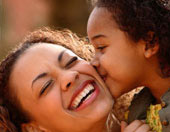 How being in love can effect our health
How being in love can effect our health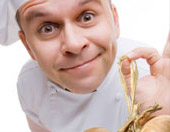 How to cut onions without crying
How to cut onions without crying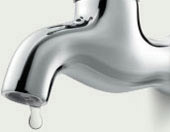 Hidden toxins in our homes and schools
Hidden toxins in our homes and schools Strategy for success with New Years resolutions
Strategy for success with New Years resolutions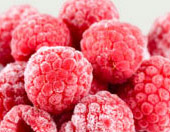 Tips for properly freezing foods
Tips for properly freezing foods Importance of strength training for seniors
Importance of strength training for seniors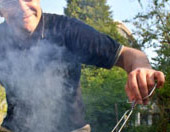 BBQ health and safety tips
BBQ health and safety tips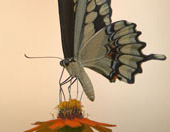 Attracting butterflies to your garden
Attracting butterflies to your garden Teaching values to our kids
Teaching values to our kids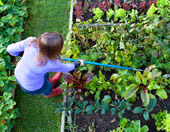 Guide to beginning a vegetable garden
Guide to beginning a vegetable garden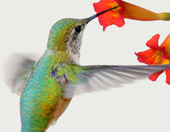 Attracting birds and hummingbirds
Attracting birds and hummingbirds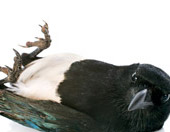 How to prevent birds from flying into glass windows
How to prevent birds from flying into glass windows When to take a child to the hospital
When to take a child to the hospital